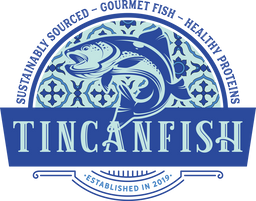Farm-raised fish are often seen as a cheaper, lower-quality alternative to their wild equivalents. However, the reality is more complex. Farming practices, fishing practices, and flavor preferences are all important to consider when choosing the best seafood for yourself and your family.
Rather than try to give a definitive answer, this article will discuss the differences between wild-caught and farm-raised fish to help you make informed decisions.
What Is The Difference?
When buying fish, you may not know whether it is wild or farmed unless you specifically ask. To an untrained eye, most fish just look like fish. However, there are many differences between the two.
The differences between farmed and wild fish go deeper than the surface. Visual cues can be used to identify your seafood’s origins. However, there are also differences in nutrition, flavor, and sustainability to consider.

[Photo by Mael BALLAND on Unsplash]
Wild-Caught Fish
Differences in flavor, nutrition, and environmental impacts are all reasons people choose wild-caught fish. However, dwindling populations and higher costs may make consumers think twice.
Wild fish is exactly what it sounds like. Fish caught in a natural habitat is considered wild. This could be the ocean, a river, or a lake.
Wild-caught fish is generally less fatty and more flavorful. Depending on the use and personal preference, this could be a good or bad thing.
The preference for wild fish comes at a price. Wild fish is generally more expensive than the farmed equivalent.

[Photo by Zuriela Benitez on Unsplash]
Farm-Raised Fish
Farming fish, or aquaculture, can be done in many different ways. Often, fish are raised in pens submerged in the ocean, lakes, or rivers. Other operations actually raise the fish in tanks on land.
Regardless of where it is done, farmed fish live a different life from their wild counterparts. Small pens and crowding introduce unique challenges.
Farmed fish have less room to move and eat fattier, less complex diets. This means the fish end up with more fat and less intense flavors. They may also have less nutritional balance.
The limited space for farmed fish can also cause disease. Because farmed fish live closer together they spread diseases more easily. In order to prevent this, antibiotics and pesticides are often used in fish farming operations. This risks creating antibiotic-resistant ‘superbugs.’
However, as global demand for seafood grows, there is an increasing need for farmed fish. The oceans simply can’t support the world’s taste for seafood! The World Bank estimates that aquaculture will account for about 62% of all seafood production in the world by 2030.
Various factors such as the number of fish per pen, the size of the pens, and the feed used all impact the quality of farmed fish. Managing and regulating aquaculture helps to decrease environmental impacts. When buying farmed fish, knowing your source is essential.

[Photo by Jack Charles on Unsplash]
The Pros & Cons
- Nutrition
- (-) Farmed fish is often higher in fat due to decreased movement and a fattier diet.
- (+) Farmed fish is generally higher in healthy omega-3 fatty acids.
- (-) A higher omega-6 to omega-3 fatty acid ratio, which may have negative health impacts.
- Sustainability
- (+) Aquaculture has less impact on rapidly shrinking natural populations.
- (-) Aquaculture can cause pollution. Antibiotics, diseases, and fish waste can all be released into the natural environment from fish farms.
- (-) Aquaculture can introduce invasive species.
- (+) Well managed aquaculture can provide healthy food with minimal environmental impacts.
- Contamination
- (-) Some studies show farm-raised fish may be higher in contamination than wild fish. Antibiotics, pesticides, mercury, and PCBs are all concerns. However, fish farmed in the US is held to stricter standards.
- (+) Some large wild predatory fish such as tuna can have higher levels of mercury contamination than farmed fish.
- Cost
- (+) Wild-caught fish can be more expensive than farmed.
- (-) Frozen wild fish may be comparable in price to farmed fish.
Which Fish Is Best?
In the end, the debate between wild and farmed fish has no clear winner. Taking into consideration the practices of specific farms is very important. While fish can be farmed with unsustainable and unhealthy practices, it doesn’t need to be this way!
As global demand for fish grows, more fish will need to be farmed in order to protect wild populations while feeding the world. The growth of aquaculture comes with environmental risks. However, these risks can be mitigated by strong regulations on aquaculture.
In the US, fish farms are already regulated. However, much of the seafood sold in the US is farmed in other countries. Other countries such as Vietnam are working hard to implement sustainable fish farming practices.
Considering where your fish comes from is essential when choosing between farmed and wild fish. Though there is no clear answer to this debate, staying informed and doing your research can help you make the best choice.
In addition to employing sustainable methods (pole-and-line, MSC certified), ALL TinCanFish products are currently wild-caught. While we may add farm-raised fish in the future, we will first consider the source in order to ensure that sustainability continues to be at the core of our practice, always.
Article written by Casey Hofford on September 15, 2020.


